Mastering 2-Digit and 3-Digit Addition and Subtraction: A Fun and Engaging Guide for Parents and Teachers
🎉Hello, teachers and parents! 👋 Whether you're a teacher or helping your child with homework, this blog is here to make teaching 2-digit and 3-digit addition and subtraction fun and easy. Grab your favorite drink, get comfortable, and let’s explore how to make math a lot more enjoyable!
Why Teach 2-Digit and 3-Digit Addition and Subtraction?
You might be wondering, why is it so important to learn 2-digit and 3-digit addition and subtraction? 🤔 These skills are the foundation for higher math. They help kids think logically and solve problems. Plus, math is something we use every day, like figuring out how much to tip at a restaurant or calculating how much a sale saves us. 🛒💸
Understanding Addition and Subtraction
Before we go over more examples, let’s talk about the parts of an addition or subtraction problem.
Parts of an Addition Problem:
- Addends: The numbers you are adding.
- Plus Sign (+): Shows that you’re adding.
- Equal Sign (=): Shows that both sides are the same.
- Sum: The result of adding.
Example:
23 + 17 = 40 - 23 and 17 are the addends.
- The sum is 40.
Parts of a Subtraction Problem:
- Minuend: The number you start with.
- Subtrahend: The number you take away.
- Equal Sign (=): Shows that both sides are the same.
- Difference: The result of subtracting.
Example:
45 - 12 = 33 - 45 is the minuend.
- 33 is the difference.
Exploring Properties with Examples
Identity Property of Addition: Adding 0 to any number keeps it the same. Example: 67 + 0 = 67
Commutative Property of Addition: The order of numbers doesn’t change the answer. Example: 34 + 56 = 56 + 34 = 90
Associative Property of Addition: How you group numbers doesn’t change the answer.
Example: (12 + 34) + 56 = 12 + (34 + 56) = 102
Addition and Subtraction With and Without Regrouping
Addition with Regrouping: When the sum of a column is greater than 9, we “carry over” to the next column.
Example: 368 + 475 = 843
Subtraction with Regrouping: When a digit in the top number is smaller than the digit in the bottom number, we “borrow” from the next column. Example:514 - 289 = 225
Addition without Regrouping: When the sum is less than 10, no regrouping is needed. Example:123 + 456 = 579
Subtraction without Regrouping: When the top number is larger than the bottom number, no regrouping is needed.
Example: 678 - 123 = 555
Addition and Subtraction Worksheet Ideas
- Addition and Subtraction Charts:
These charts help students see how numbers work together and make math easier to understand.
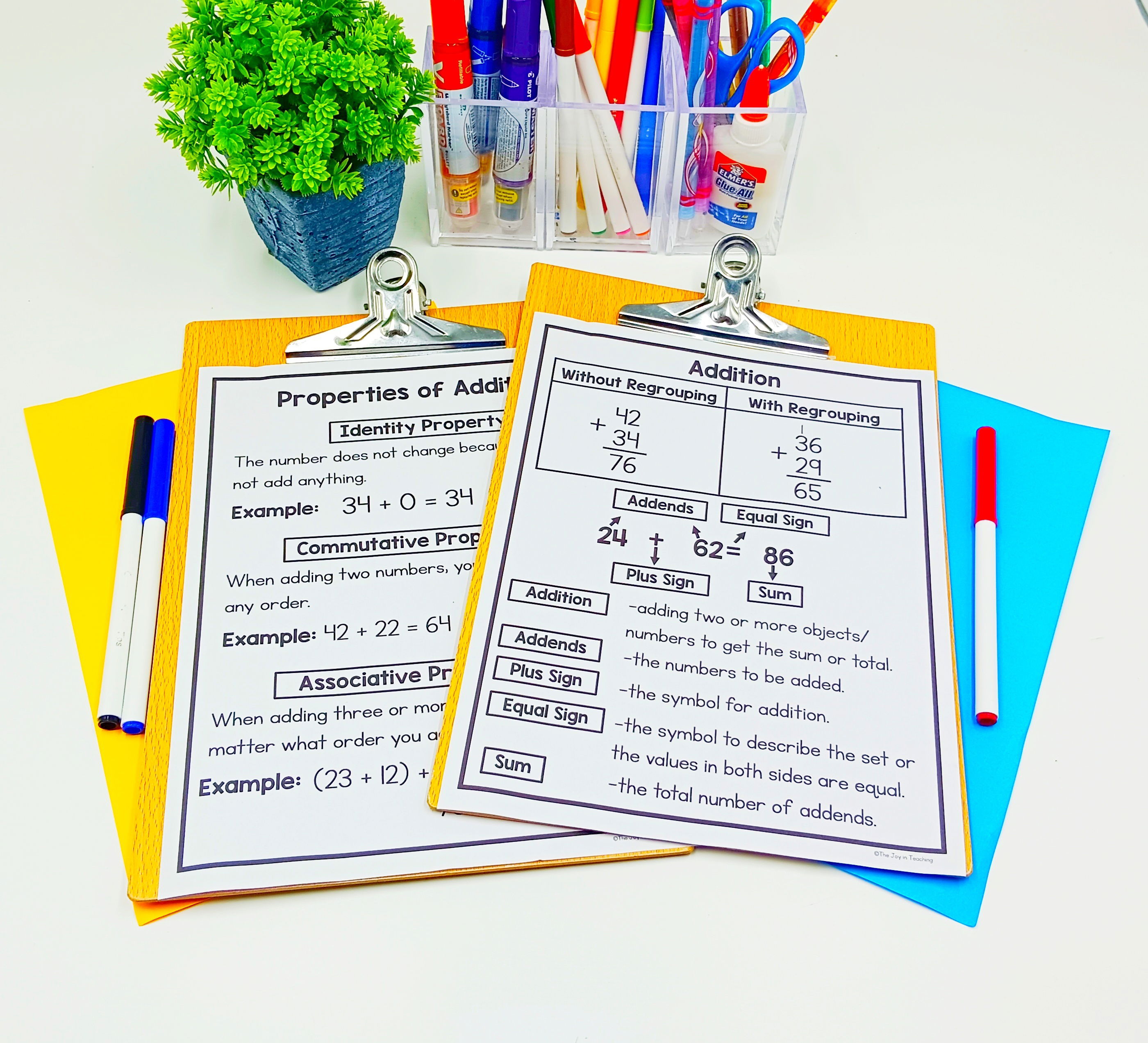
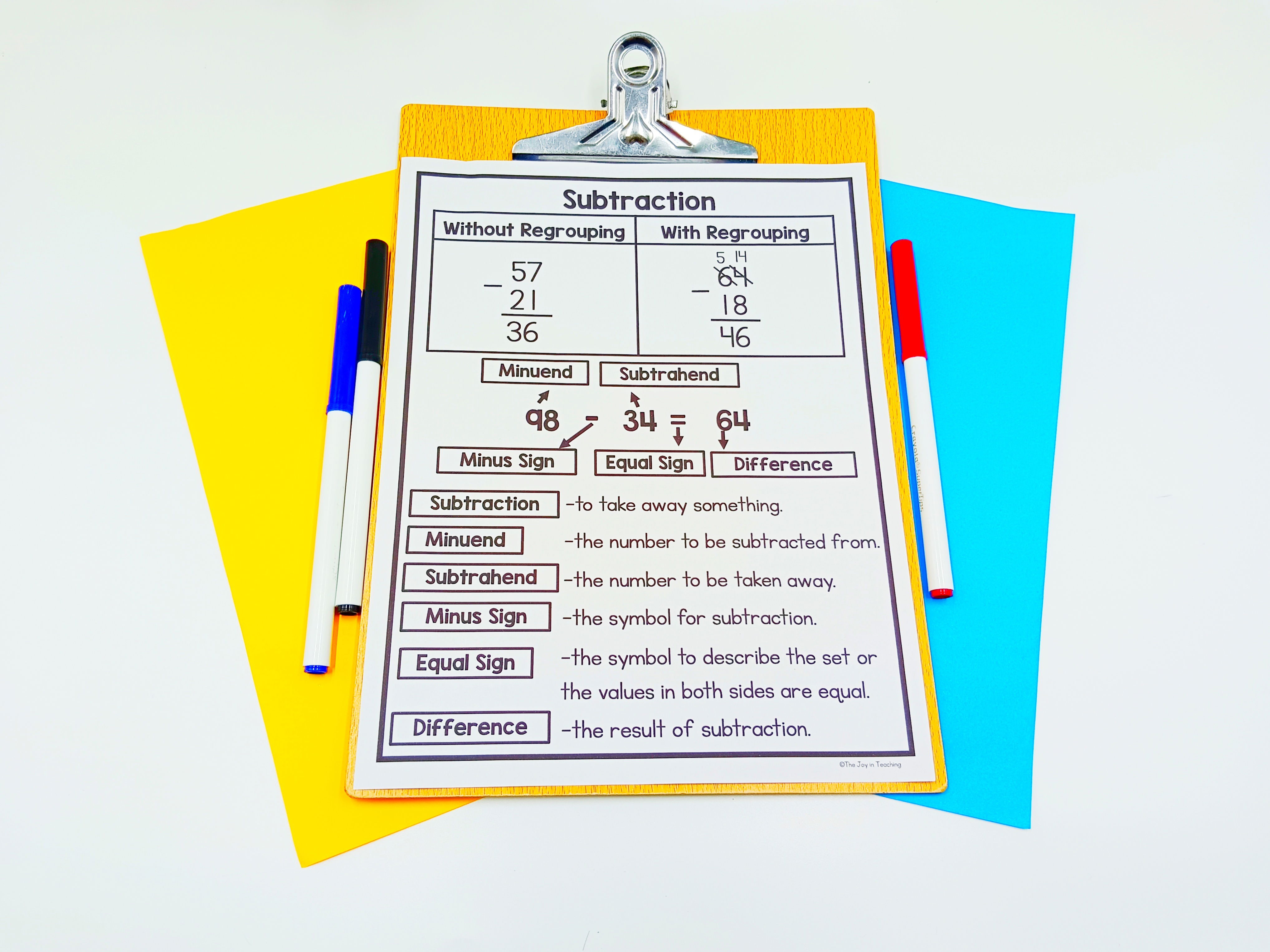
- Practice Worksheets:
These worksheets give students a chance to apply what they've learned. Start easy, and work up to harder problems.
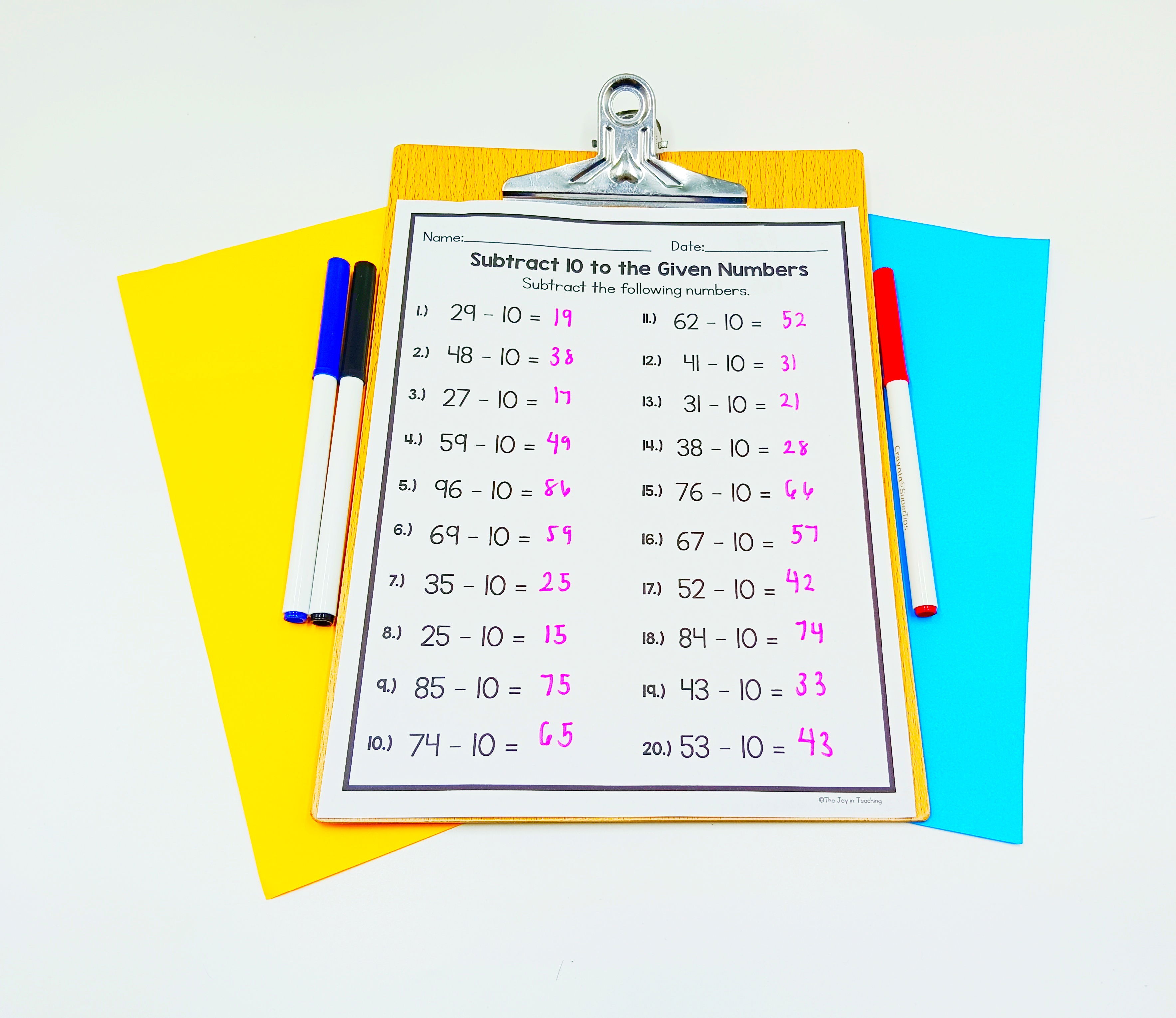
- True or False Equation Worksheet:
This worksheet helps students check if an equation is right or wrong. It’s a great way to test their math skills.
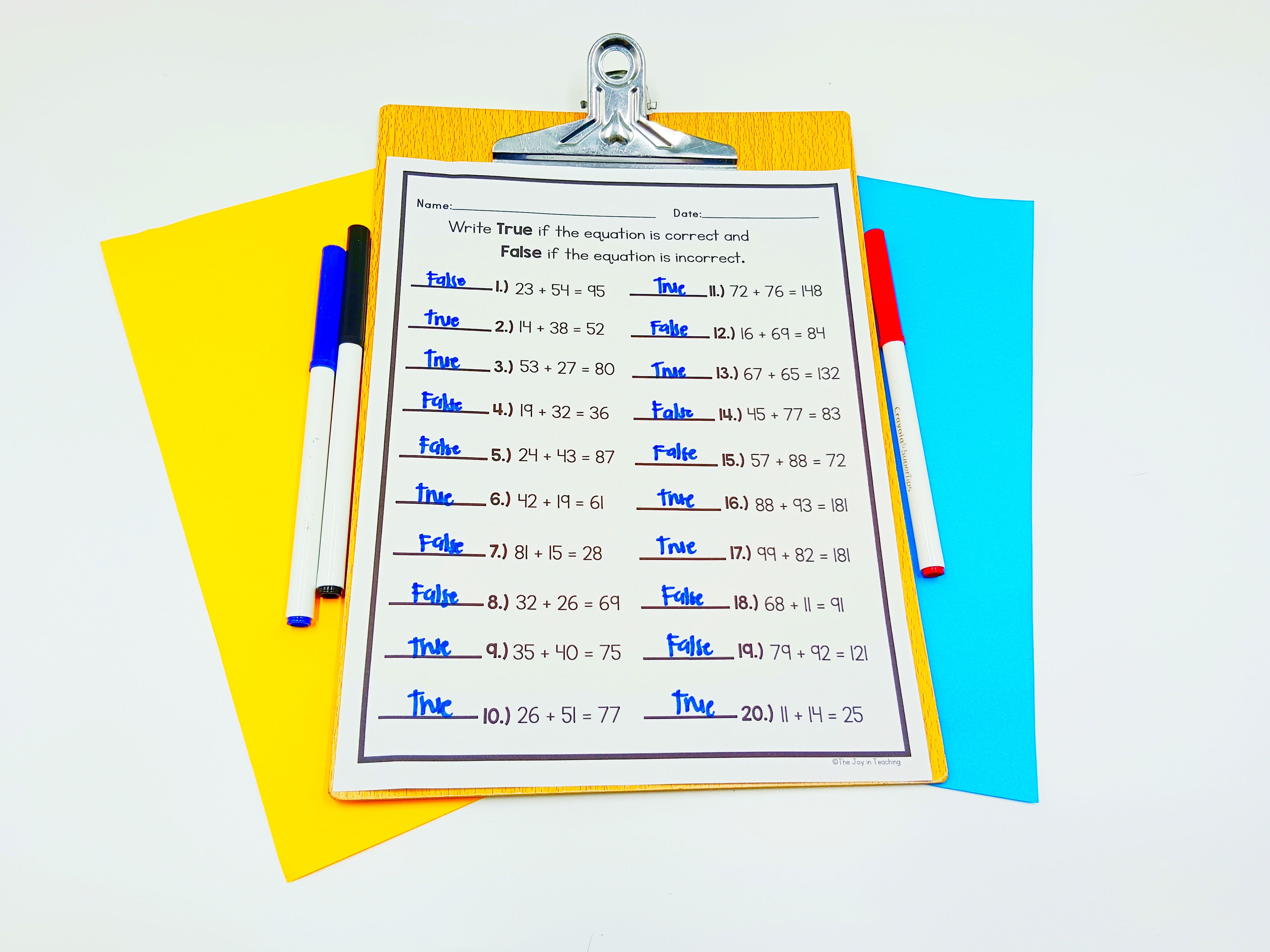
- Missing Numbers Worksheet:
These asks students to fill in the blanks to complete math equations, helping them think logically about how numbers relate.
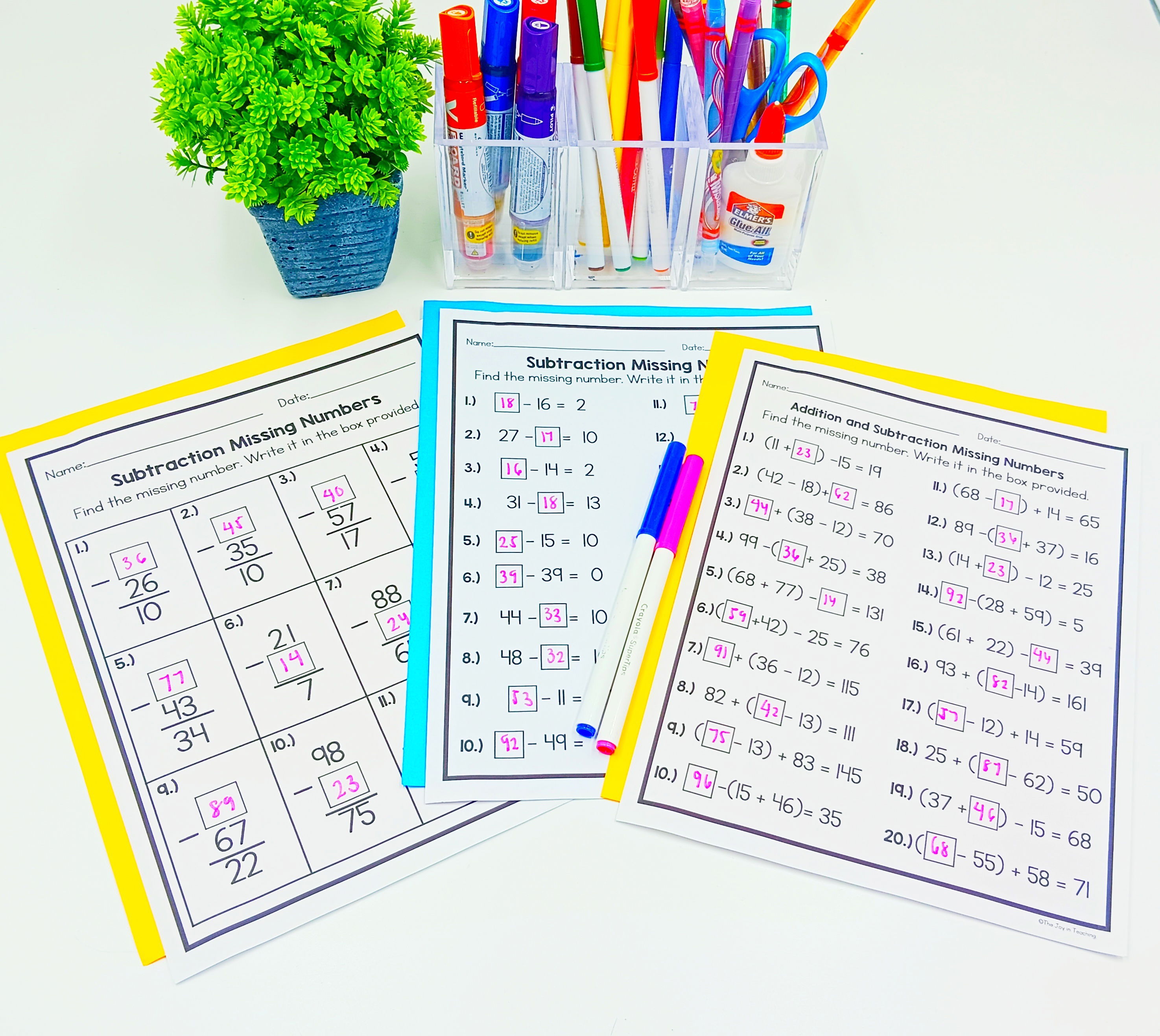
- Word Problems:
These problems teach how math works in real life and help kids practice addition and subtraction in different situations.
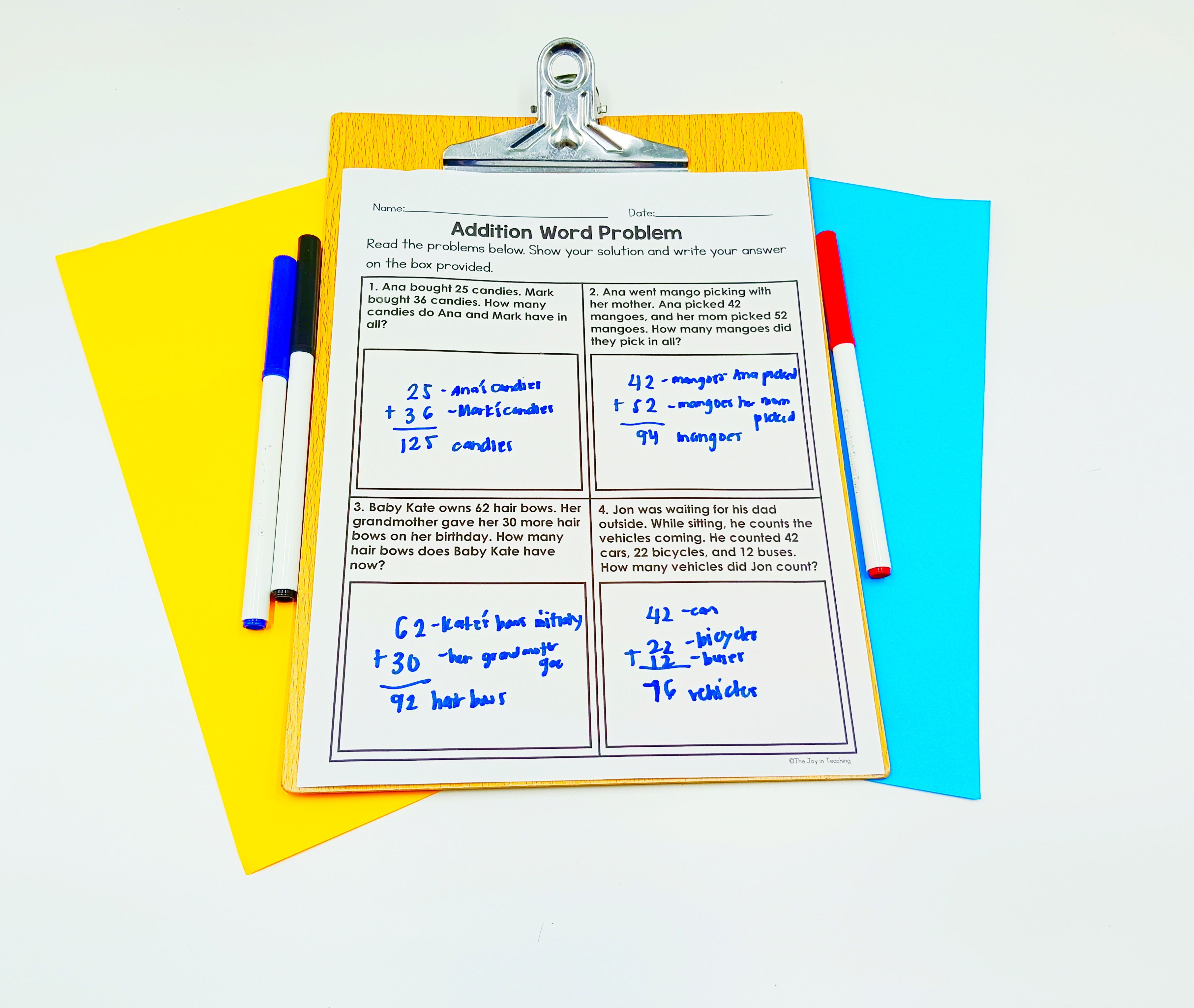
Tips and Tricks for Teaching 2-Digit and 3-Digit Addition and Subtraction
Teaching math can be fun! Here are some tips to keep kids excited about learning addition and subtraction:
1. Make It Visual 🎨
Kids learn better when they can see things. Use colorful charts and diagrams to explain. The addition and subtraction charts are great for this!

2. Use Real-Life Examples 🍏
Bring math into everyday situations. For example:
- Addition: “You have 23 apples, and I give you 17 more. How many apples do you have now?”
- Subtraction: “You have 45 candies, and you give 12 to your friend. How many candies are left?”

3. Turn It Into a Game 🎲
Games make learning fun! Here are some ideas:
- Math Bingo: Create bingo cards with sums and differences. Call out the problems, and students mark their answers.
- Flashcards: Use flashcards for quick drills.
- Math Scavenger Hunt: Hide math problems around the room. Students solve them to find the next clue.
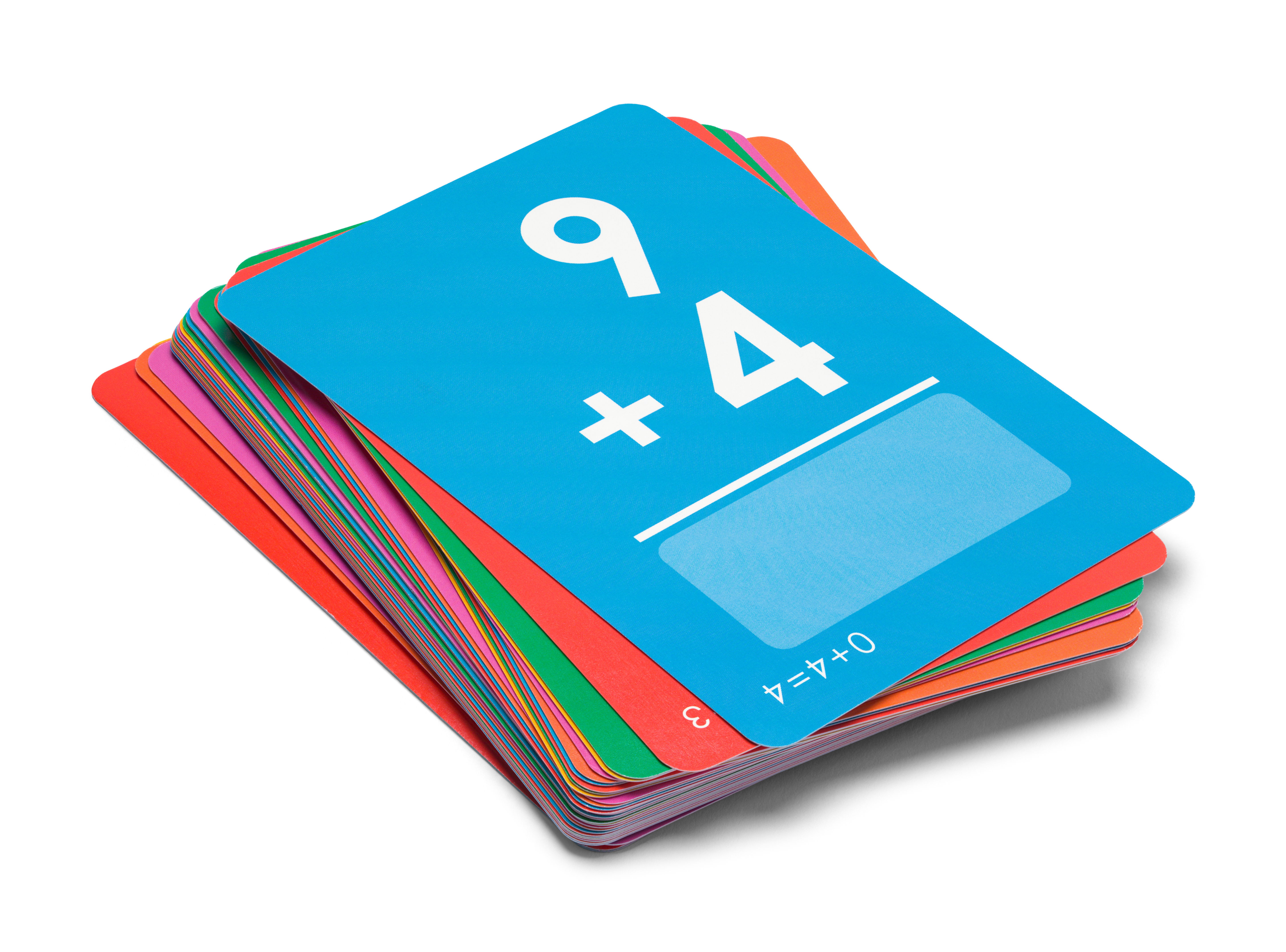
- Encourage Group Work 🤝
Let students work together to solve problems. It’s a great way to teach teamwork and make math more fun.

- Incorporate Technology 💻
There are many apps and websites that make practicing addition and subtraction enjoyable. Use these tools to mix things up.

- Create Story Problems 📚
Have kids make up their own math problems using their favorite characters or activities. This makes math feel more personal and fun.

Making Math Fun at Home
Parents, you can also make math fun at home! Try these ideas:
- Cooking Together 🍪: Have your child measure ingredients, double a recipe, or divide cookies equally.

- Shopping 🛍️: Let your child help you calculate the total cost or figure out discounts.

- Chore Chart 🧹: Use a chart to add up points for chores and let your child earn rewards.

Wrapping It Up
Teaching 2-digit and 3-digit addition and subtraction doesn’t have to be hard. With the right tools and a bit of creativity, you can make math fun and easy. If you're looking for more help, check out the 2-Digit and 3-Digit Addition and Subtraction With and Without Regrouping Worksheet for even more activities to support your teaching. Happy teaching, and may your math adventures be full of fun and learning! 🎉✏️📚
Bundle Includes:
2. 2-Digit Subtraction Worksheet
4. 3-Digit Subtraction Worksheet
Follow Me for More Teaching Tips with Joy For more tips, resources, and a daily dose of teaching joy, follow me on:
Got questions or want to share your success stories? Drop me an email at thejoyinteaching@gmail.com. I love hearing from fellow educators and parents! Happy Teaching!
Joy Medalla
The Joy in Teaching 💛